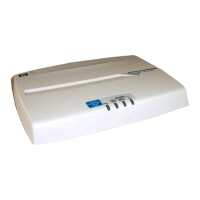A-8
File Uploads, Downloads, and Resets
Transferring Configuration Files
Transferring Configuration Files
Using the Web user interface and CLI commands described in this section,
you can copy access point configuration files to and from an FTP, TFTP, or
STP server.
When you copy the access point configuration file to a specified server type,
that file can later be downloaded to the access point to restore the system
configuration. The success of the file transfer depends on the accessibility of
the specified server type and the quality of the network connection.
Web: Configuration File Upload and Download
The Configuration Files tab on the System Maintenance screen enables the
access point’s configuration to be saved to a file on a remote FTP or TFTP
server.
The Web interface enables you to modify these parameters:
■ Save Running Configuration: Parameters and actions needed to save
a running configuration.
• [Save]: Saves the current configuration as a personalized default.
■ Transfer Configuration: Parameters and actions needed to upload or
download a configuration.
• Server Type: Indicates the type of server to configure (FTP, TFTP,
SCP). (Default is FTP)
• Direction: Indicates whether to save the file remotely or import the
file (Download-Restore; Upload-Save). (Default is Download)
• Server IP: Indicates the IP address of the server.
• File Name: Indicates the name of the config file.
The file name should not contain slashes (\ or /), the leading letter of
the file name should not be a period (.), and the maximum length for
file names on the FTP/TFTP server is 255 characters or 32 characters
for files on the access point. (Valid characters: A-Z, a-z, 0-9, “.”, “-”, “_”)
The file name extension also needs to be specified. To avoid over-
writing files on the server, it is recommended to add the “.txt” exten-
sion to the file name for readable text configuration files and the “.bin”
extension for binary files.
• Username: Indicates the username on the server.
• Password: Indicates the password on the server.

